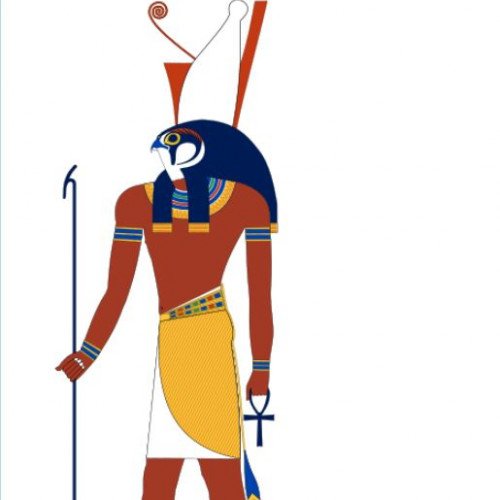Horus VS Saci (Brazilian folklore)

Horus
Horus or Her, Heru, Hor, Har in Ancient Egyptian, is one of the most significant ancient Egyptian deities who served many functions, most notably god of kingship and the sky. He was worshipped from at least the late prehistoric Egypt until the Ptolemaic Kingdom and Roman Egypt. Different forms of Horus are recorded in history and these are treated as distinct gods by Egyptologists. These various forms may possibly be different manifestations of the same multi-layered deity in which certain attributes or syncretic relationships are emphasized, not necessarily in opposition but complementary to one another, consistent with how the Ancient Egyptians viewed the multiple facets of reality. He was most often depicted as a falcon, most likely a lanner falcon or peregrine falcon, or as a man with a falcon head.The earliest recorded form of Horus is the tutelary deity of Nekhen in Upper Egypt, who is the first known national god, specifically related to the ruling pharaoh who in time came to be regarded as a manifestation of Horus in life and Osiris in death. The most commonly encountered family relationship describes Horus as the son of Isis and Osiris, and he plays a key role in the Osiris myth as Osiris's heir and the rival to Set, the murderer and brother of Osiris. In another tradition Hathor is regarded as his mother and sometimes as his wife.Claudius Aelianus wrote that Egyptians called the god Apollo 'Horus' in their own language.
Statistics for this Xoptio

Saci (Brazilian folklore)
Saci (pronounced [saˈsi] or [sɐˈsi]) is a character in Brazilian folklore. He is a one-legged black or mulatto youngster, who smokes a pipe and wears a magical red cap that enables him to disappear and reappear wherever he wishes (usually in the middle of a dust devil). Considered an annoying prankster in most parts of Brazil, and a potentially dangerous and malicious creature in others, he nevertheless grants wishes to anyone who manages to trap him or steal his magic cap. However, his cap is often depicted as having a bad smell. Most people who claimed to have stolen this cap say they can never wash the smell away. The legend says that a person can trap a Saci inside a bottle when he is in the form of a dust devil. There are several variants of the myth, including: Saci-pererê (pronounced [sɐˈsi pe̞ɾeˈɾe]), black as coal; Saci-trique (pronounced [sɐˈsi ˈtɾikɪ]), mulatto and more benign; Saci-saçurá (pronounced [sɐˈsi sɐsuˈɾa]), with red eyes. Saci-pererê is also the name of a Brazilian cocktail consisting of 60 millilitres (2.1 imp fl oz; 2.0 US fl oz) of cachaça and 45 millilitres (1.6 imp fl oz; 1.5 US fl oz) of honey, which is a home remedy said to be useful in treating the common cold.